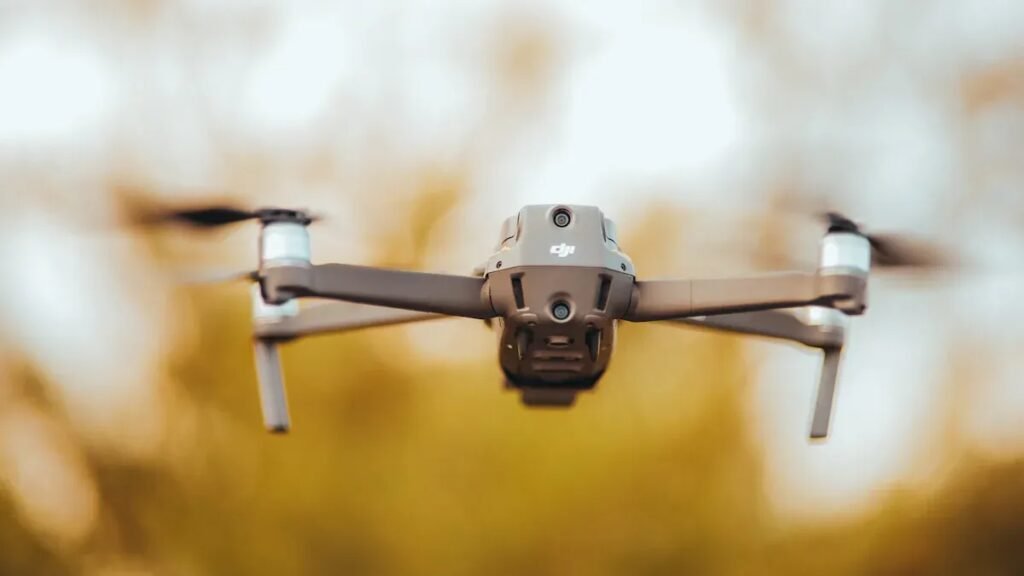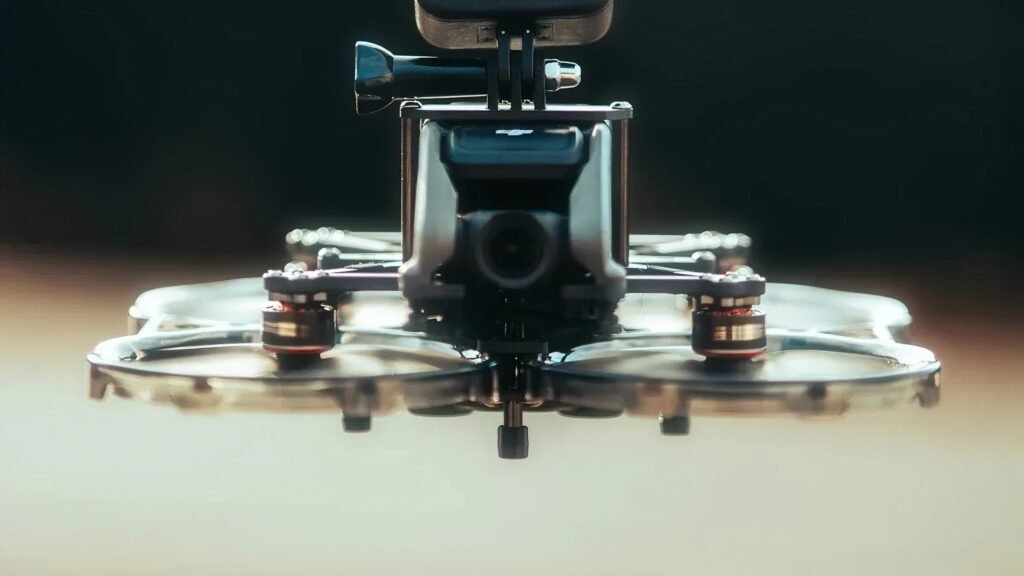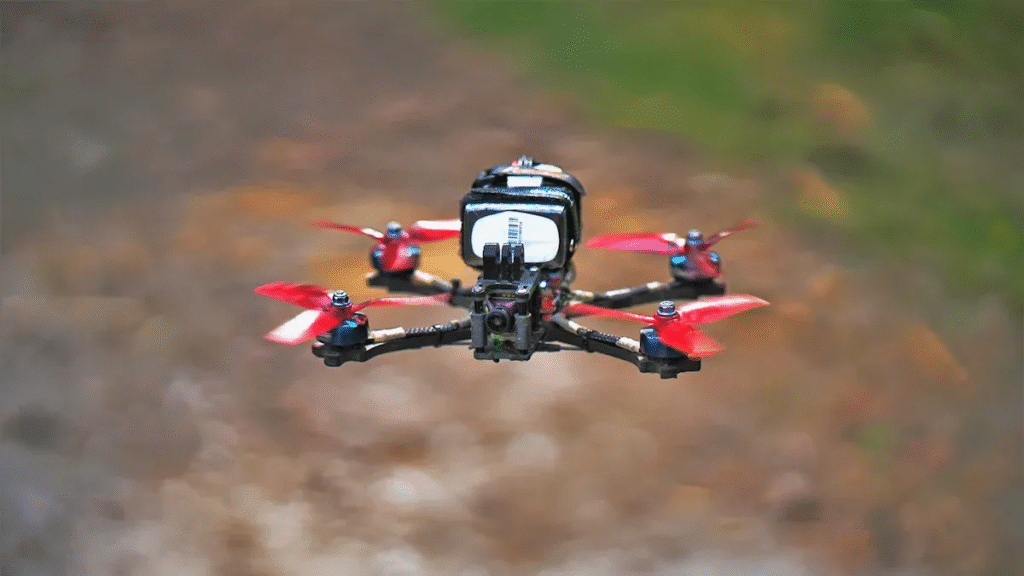Drones have revolutionized industries from aerial photography to industrial inspection, and at the heart of every agile, high-performance drone lies a marvel of engineering: the drone motor. Unlike conventional brushed DC or stepper motors, drone motors routinely achieve tens of thousands of revolutions per minute (RPM), enabling rapid lift, precise maneuvering, and sustained flight. But what design principles allow drone motors to outpace other motors so dramatically? In this article, we’ll delve into the technological innovations—ranging from brushless construction to high-voltage power delivery—that empower drone motors to spin faster while maintaining efficiency and reliability.

1. Brushless DC (BLDC) Architecture
Traditional DC motors rely on carbon brushes and a mechanical commutator to switch current among the rotor windings. Brushes introduce friction, electrical noise, and wear, all of which limit maximum RPM and service life. Drone motors, however, almost exclusively use Brushless DC (BLDC) designs:
Electronic Commutation: Hall sensors or sensorless back-EMF detection enable the electronic speed controller (ESC) to switch phases rapidly and precisely, eliminating brush-related friction and arcing.
Reduced Inertia: The absence of brushes and associated hardware allows for a lighter, more compact rotor assembly that accelerates and decelerates with minimal energy loss.
High-Speed Capability: With no physical contact components, BLDC motors can safely spin at 20,000–50,000 RPM or higher, whereas brushed motors struggle beyond 5,000–10,000 RPM before overheating or wearing out.
This brushless architecture is the cornerstone of high-speed operation, drastically reducing mechanical limitations and maintenance requirements compared to other motor types.
2. High KV Ratings and Voltage Scaling
A key specification of BLDC motors is the KV rating (RPM per Volt). Drone motors are engineered with high KV values—often between 800 KV and 2,500 KV—meaning each volt applied yields 800 to 2,500 RPM under no-load conditions. By combining high KV motors with multi-cell LiPo batteries, drones achieve staggering speeds:
| Battery Configuration | Voltage (V) | Theoretical RPM (at 1,000 KV) |
|---|---|---|
| 3S LiPo | 11.1 | 11,100 RPM |
| 4S LiPo | 14.8 | 14,800 RPM |
| 6S LiPo | 22.2 | 22,200 RPM |
Table 1: How KV rating and battery voltage interact to determine maximum no-load RPM.
Higher voltage also reduces the current required for the same power output, mitigating resistive losses (I²R) in the windings and ESC, which further supports sustained high-RPM operation.
3. Lightweight, Low-Inertia Rotor Design
Achieving rapid spin-up and responsive control demands minimal rotational inertia. Drone motor designers optimize every component for weight:
High-Energy Neodymium Magnets: Compact, strong magnets concentrate flux in a small package, allowing for fewer poles and a slimmer rotor.
Thin-Gauge Stators with Optimized Winding: Precision CNC lamination and high copper fill ratios enable thinner stator cores and tighter winding layouts, reducing overall diameter and weight.
Lightweight Shaft and Bearings: Hardened steel shafts and ceramic or shielded ball bearings reduce friction and rotational mass.
By drastically minimizing rotor inertia, drone motors accelerate to target speeds in milliseconds—vital for real-time stabilization and acrobatic maneuvers.
4. Advanced Electronic Speed Controllers (ESCs)
The ESC isn’t just a power switch; it’s an intelligent controller that enables high-speed operation:
High-Frequency PWM Switching: Contemporary ESCs operate at PWM frequencies above 32 kHz, smoothing current delivery and reducing audible noise.
Field-Oriented Control (FOC): FOC algorithms calculate the optimal current vector for maximum torque and efficiency, allowing faster acceleration with lower heat generation.
Active Braking and Regeneration: During rapid deceleration, some ESCs can recuperate energy back to the battery, improving overall system efficiency and thermal management.
These sophisticated control strategies maintain stable motor performance at extreme RPMs, ensuring precise throttle response and long ESC lifespan.
5. Efficient Heat Dissipation and Thermal Management
High-RPM motors generate significant heat from winding losses and air friction. Drone motors tackle this with:
Ventilated Motor Housings: Strategically placed vents and fins on the outer casing channel airflow through the windings, cooling both stator and rotor.
High-Thermal-Conductivity Materials: Aluminum or magnesium housings plus thermally conductive epoxies draw heat away from critical components.
Balanced Performance Envelope: Designing motors to operate optimally at their “sweet spot” (typically 70–80% of max throttle) ensures efficient cooling during sustained flight.
Effective thermal management prevents performance degradation and extends motor service life, even under the rigors of prolonged high-RPM use.
6. Optimized Power-to-Weight Ratios
In aviation, every gram counts. Drone motors are engineered to deliver exceptional power while remaining lightweight:
Minimalist Design Philosophy: Eliminating unnecessary mass—such as bulky housings or extra sensors—lowers overall drone weight.
Precision Manufacturing: Tight CNC tolerances allow for thinner walls and tighter clearances, shaving off additional grams without compromising strength.
High-Discharge Batteries: Paired with LiPo batteries capable of 20C–100C discharge rates, drone motors receive high instantaneous currents to spin up quickly without voltage sag.
This synergy of light materials and potent power sources means more thrust per gram, enabling rotor speeds unmatched by heavier motor systems found in electric vehicles or industrial machinery.
7. Trade-Offs: Speed vs. Torque and Propeller Matching
While drone motors excel in speed, they do so with lower torque per RPM compared to bulkier, low-speed motors. To maximize efficiency:
Propeller Selection: High-RPM, small-diameter props minimize drag and match the motor’s torque curve, translating RPM into thrust efficiently.
Gearless Direct Drive: Most multirotor drones mount props directly on the motor shaft to avoid gearbox losses; this direct drive demands motors optimized for both speed and torque at specific prop sizes.
Hybrid Designs for Heavy-Lift Drones: Large industrial drones use lower-KV, high-torque variants to spin massive props at moderate RPMs, illustrating the balance between torque and speed.
Understanding these trade-offs is crucial when selecting a motor-propeller combination tailored to specific drone applications.
8. Comparing Drone Motors with Other Motor Types
| Feature | Brushed DC | Stepper | Hub Motor (EV) | Drone BLDC |
|---|---|---|---|---|
| Brushless | No | Yes (hybrid) | Often yes | Yes |
| Max RPM | ~5,000 RPM | ~1,000 RPM | ~10,000 RPM | 20,000–50,000 RPM |
| Torque Density | Medium | High | High | Medium |
| Power-to-Weight | Low | Low–Medium | Low | High |
| Maintenance | High (brush wear) | Low | Low | Low |
| Efficiency | 70–80% | 50–80% | 80–90% | 85–95% |
Table 2: How drone BLDC motors stack up against other common motor types.
Drone BLDC motors achieve higher RPMs primarily through brushless design, lightweight construction, and electronic control, whereas other motor types sacrifice speed for higher torque, precision positioning, or integration simplicity.
9. Impact on Drone Performance and Applications
High-RPM drone motors translate to:
Sharper Throttle Response: Millisecond-scale acceleration improves flight stability and responsiveness to pilot inputs or autopilot commands.
Compact Frame Design: Smaller, faster-spinning motors mean smaller frames and reduced drag, enhancing maneuverability and flight time.
Payload Flexibility: Superior power-to-weight allows additional sensors or cameras without sacrificing agility.
Specialized Applications: Racing drones push RPM limits for maximum speed, while cinematic drones leverage optimized speed curves for ultra-smooth camera movements.
Whether you’re racing through an FPV course or mapping terrain for agriculture, the ability of drone motors to rotate faster underpins every aspect of aerial performance.
10. Choosing the Right High-Speed Drone Motor
When selecting a motor for your drone, consider:
KV Rating: Higher KV for racing (speed), lower KV for heavy-lift (torque).
Voltage Compatibility: Match motor to battery cell count for ideal RPM range.
Stator Size and Pole Count: Influences torque and efficiency.
Build Quality: Look for quality bearings, balanced rotors, and good thermal design.
ESC Compatibility: Ensure your ESC supports the motor’s current draw and desired PWM or FOC features.
For expert advice and custom-tailored drone motors, explore our product range on Retek Motors.
Drone motors achieve unparalleled rotational speeds through a combination of brushless architecture, high KV ratings, low-inertia design, advanced ESC algorithms, and optimized thermal and power delivery systems. By understanding these core principles—along with the trade-offs between speed and torque—you can select or engineer motors that push the boundaries of flight performance, whether for high-speed racing, precision surveying, or heavy-lift industrial applications.




